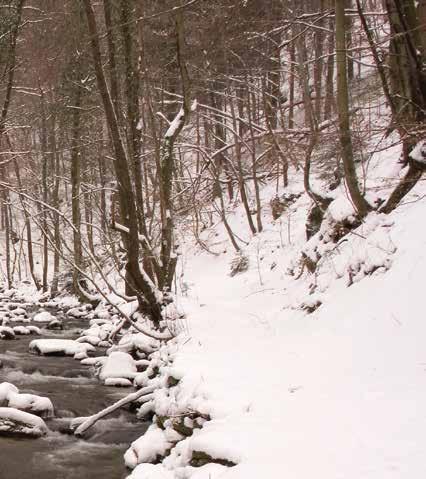
2 minute read
Who needs a compass anyway? FIELDCRAFT FROM THE PAST CAN HELP GUIDE YOU IN THE BUSH
BY CRAIG MACARTNEY
An 1887 issue of the Shawville Equity came into our family recently and had a story with tips it said made compasses redundant. Quoting an old frontiersman guide, the publication recycled pioneer wisdom about finding your way in the woods. Don’t junk your map and compass just yet, but the Equity’s story was more than just “old woodsman’s tales,” and more than a century later nudged me into reviewing my own directional observations.
Advertisement
The paper said, “There is no need of a compass while travelling through the woods … for there are ways of getting your bearing without one. Firstly, three-fourths of the moss of the trees grow on the north side; and secondly, the heaviest boughs on spruce trees are always on the south side. Remember these things and you will never get lost.”
Note that the writer wasn’t talking about sun navigation. In sunny conditions anyone can get a rudimentary bearing from the sun,

but clouds and fog make it close to impossible. What that long-ago writer had in mind was signals from plants, trees and other observations from the natural world.
While not as accurate as a compass, these signs can help point you in the right direction.
The paper made the point that plants provide clues about which way is south, where the sun gives the most light and energy. Moss and lichen both grow on the bark of mature trees and both provide a guide. Moss thrives in damp, shaded areas; lichen needs drier, sunlit areas. Throughout the day, the sun dries the southern side of trees, creating a welcome environment for lichen, while the northern side remains shaded and damp, nurturing moss. A sample of several trees can determine which direction consistently reveals soft green moss and which opposite direction has rough, greyish-yellow lichen.
In winter, debris on the snow provides clues pointing south. As dark-coloured debris soaks up solar energy, the south-facing part of, say, a leaf or chunk of bark, receives more energy, melting the snow faster. So the debris sinks into the snow at a slight angle pointing south. This method is best after hours of consistent sunlight in heavy, wet snow, and on days with light wind or none at all.
Speaking of wind, knowing your area’s prevailing wind direction is useful too. Spruce boughs grow heaviest on the lee side of the wind. In Ottawa-Gatineau, prevailing winds come from the southwest, and our area has bazillions of spruce. Those southwest winds mean the thickest boughs usually hang from the northeastern side of the trunk, but be careful: Terrain can create local micro weather patterns. For example, narrow valleys and lakes can create natural wind tunnels, redirecting the wind: spruce take their growth cues from the wind, whether it’s “normal” or off-course.
Subtle natural signals like this can be useful in a pinch, and enrich outdoor time whether needed or not.

Why are these clients smiling?











